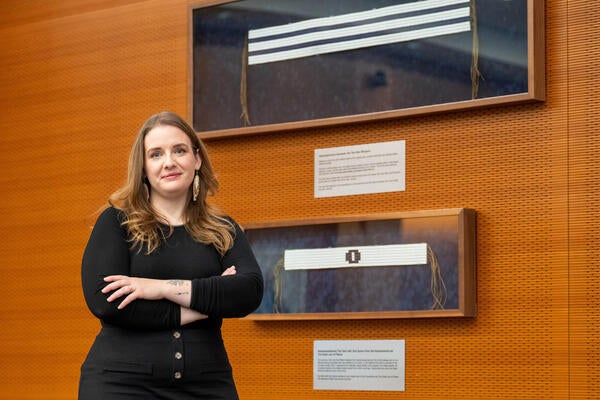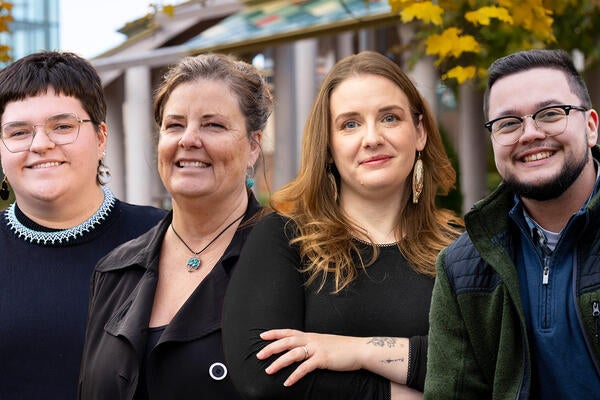
Q and A with the experts: Misinformation, disinformation, and the threat to democracy
The heavy presence of social media in our lives allows misinformation and disinformation to go unchecked and proliferate

The heavy presence of social media in our lives allows misinformation and disinformation to go unchecked and proliferate
By Media RelationsThe heavy presence of social media in our lives allows misinformation and disinformation to go unchecked and proliferate. And the resulting online arguments can easily progress to our face-to-face interactions. Rob Danisch is a professor of communication arts at the University of Waterloo. He says there is more at stake than unfriending or uncomfortable family dinners when the points of view we hold and the language we use drive a wedge between us.
What's the difference between misinformation and disinformation?
Misinformation is when we spread or circulate false information, but we're not aware that it's false. Disinformation is when we deliberately mislead people with biased information. So we're intentionally manipulating some narrative or some facts, and we know it's wrong.
How common are they?
Now more than ever, we see the spread of claims and information quickly. That speed means we have very little time to be certain, especially if we're the ones culpable for spreading misinformation. If we don't take the time to verify whether what we're saying is true or false, we can change beliefs much more quickly than we could at any other moment in human history, I think. When people are deliberately misleading other people, the intention is almost always to manufacture conflict.
What's an example of polarizing language?
Recently I've seen this pattern emerge online where there's a refusal to listen to the other side. When you see people opting out of the conversation entirely, you set yourself up for further conflict and that's going to be damaging to the project of collective decision-making. Now, there are worse examples of polarization, but that's a kind of seed that will germinate later on into more intensified patterns of communication that manufacture conflict.
What’s at stake?
In the last 10 or 15 years, there is a pattern of talking to one another that increases polarization, increases conflict, increases fear and anger, and feelings of agitation, anxiety, and uncertainty. If you live in a kind of social democracy, where you have to get along with strangers to make decisions, but you're living in that place with patterns of using language that are manufacturing polarization, conflict, anxiety, or fear, you're going to be very bad at making decisions together. And so the presence of polarizing language prepares the ground for a threat to democracy.
How does this way of communicating threaten democracy?
Democracy is not just a system of government. It does name a system of government, but it's also a way of life. If something's affecting all of us, we have to kind of get along with strangers, and then make a decision together. Good decisions are made when certain kinds of collaborative or constructive relationships with strangers exist, and bad decisions are made when our relationships with strangers are characterized by distrust, anxiety, and fear. If we only have this kind of polarizing language, these patterns of attack, defense, anger, and fear, we're not in a very good position to live democratic lives, to make good decisions with others.
How do we have constructive conversations with people with opposing viewpoints?
Most people don't like being told what to do. Think about what happens when you get pushed. You either fall backward, or you push back. It's fight or flight. We want what I call pull tactics of persuasion that draw someone in, engage them, bring them closer. Ask questions in a non-judgmental, neutral way. And after a few questions, the fight-or-flight response will soften. When our relationships are characterized by trust and mutual understanding, that's when people change their minds.
Rob Danisch, a professor of communication arts at the University of Waterloo, discusses how misinformation and disinformation threaten democracy. Listen to his interview in episode 120 of the Beyond the Bulletin podcast to learn more.

Read more
New research from the University of Waterloo centres Haudenosaunee-led efforts in the repatriation and reclamation of cultural and intellectual property

Read more
Researchers awarded funding to investigate ecology, climate change, repatriation, health and well-being through cultural and historical lens

Read more
New Canada Research Chairs will tackle future-focused problems from social robots and intergroup attitudes to geochemistry and nanoscale devices
The University of Waterloo acknowledges that much of our work takes place on the traditional territory of the Neutral, Anishinaabeg, and Haudenosaunee peoples. Our main campus is situated on the Haldimand Tract, the land granted to the Six Nations that includes six miles on each side of the Grand River. Our active work toward reconciliation takes place across our campuses through research, learning, teaching, and community building, and is co-ordinated within the Office of Indigenous Relations.